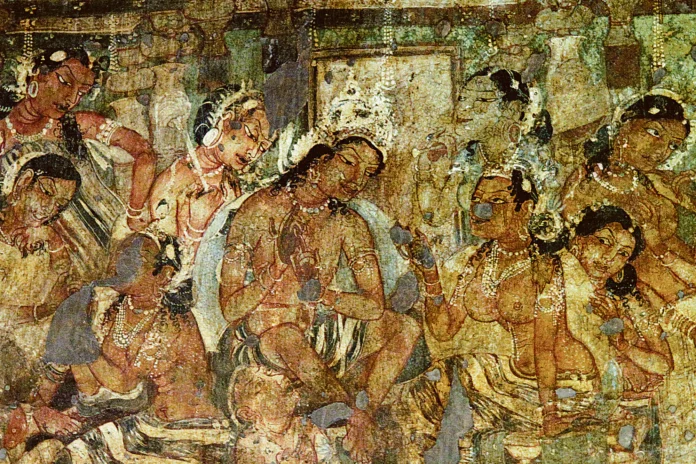Nestled in the western Indian plateau, the Ajanta and Ellora Caves are not just ancient monuments—they are open-air memoirs, where rock-cut walls whisper timeless stories. Here, Buddhist monks, artisans, and patrons converged to channel narratives through frescoes carved into basalt. This is where art and storytelling unite in stone.
1. Uncovering the Narrative Canvas
Ajanta: Carved into semi-circular basalt cliffs along the Waghora River in Maharashtra, Ajanta comprises 30 caves, created during two pivotal phases: early Hinayana (2nd century BCE–1st century CE) and later Mahayana under Vakatakas (5th century CE). Chaityagrihas (prayer halls) and Viharas (monastic dwellings) are richly decorated with murals recounting Jataka tales—stories of Buddha’s previous lives—rendered in tempera with natural pigments.

Ellora: About 100 km away, Ellora features 34 open caves—Hindu, Buddhist, Jain temples carved between 600–1000 CE . Though its frescoes are fewer, its carvings—like the colossal Kailasa temple—complement the visual storytelling tradition established at Ajanta.
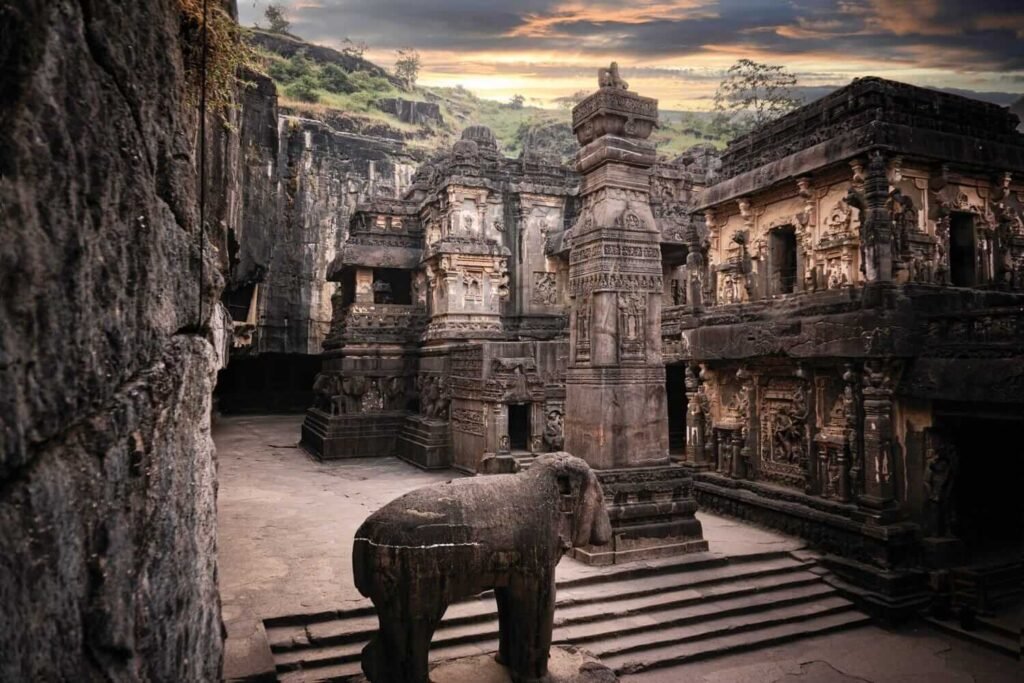
2. Frescoes That Breathe Life
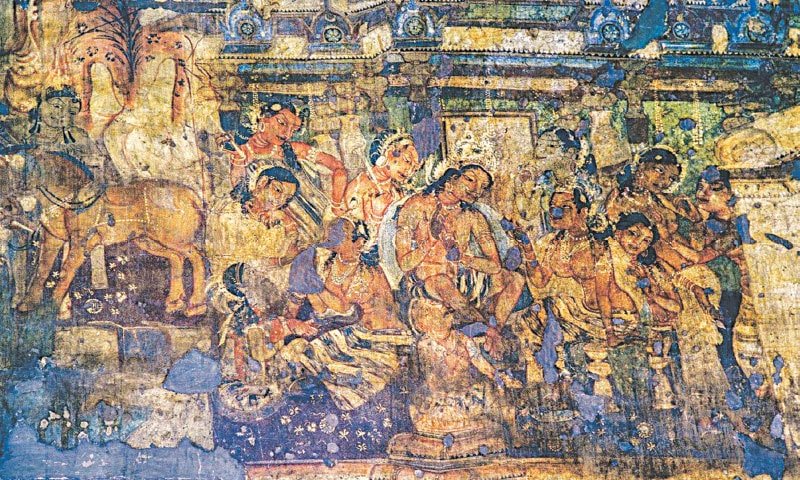
Painted on lime plaster, Ajanta and Ellora Caves frescoes burst with natural pigments—red, yellow, brown, black, white, and often imported lapis lazuli—and narrate dynastic tales.
- Jataka Tales: These depict the benevolent acts of the Bodhisattva before becoming Buddha—through animal-human fables packed with moral and cosmological meaning.
- Human Drama: From kings renouncing power to Persian merchants in blue socks, these frescoes capture socio-cultural nuance.
- Emotional Artistry: Elegant, expressive lines—swaying dancers, compassionate Bodhisattvas—led William Dalrymple to call them “nothing less than the birth of Indian art”.
3. Cross-Cultural Echoes Along Silk Routes

Ajanta and Ellora Caves was a vibrant node on the Silk Roads: Hellenistic influence shapes perspective and three-quarter profiles; pigments like lapis lazuli trace routes from Central Asia en.unesco.org. Frescoes reveal a melting pot—Sassanian traders, exotic textiles—showcasing cultural cosmopolitanism in 5th-century Maharashtra.
4. The Rediscovery & Revival
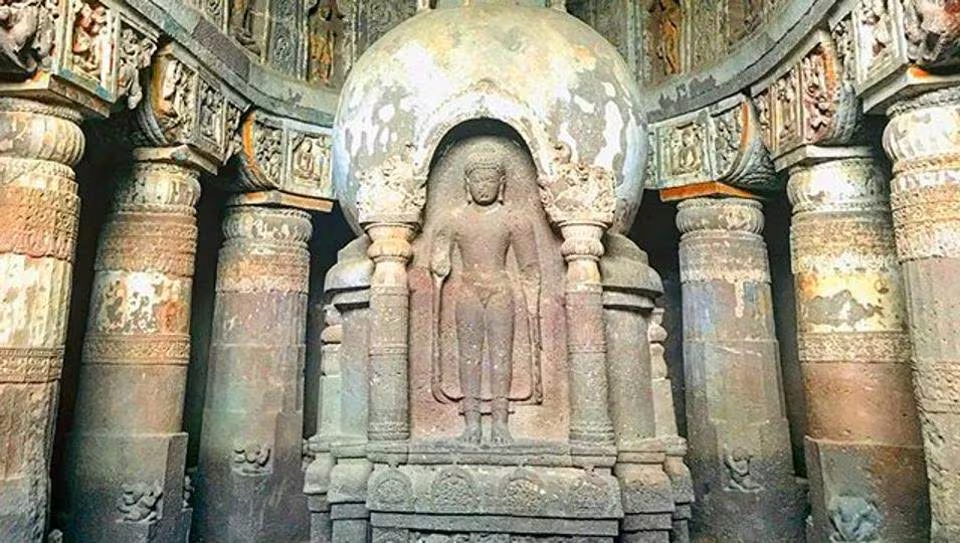
Discovered in 1819 by Captain John Smith (who left his mark on a Bodhisattva fresco) en.wikipedia.org, Ajanta and Ellora Caves inspired artistic resurgence in India. Artists like Nandalal Bose and Abanindranath Tagore revived tempera styles and Indian aesthetics ; even global admiration followed—from Anna Pavlova’s ballet to exhibitions in Louvre and Smithsonian en.wikipedia.org.
5. Rock-Cut Architecture & Frescoes in Harmony
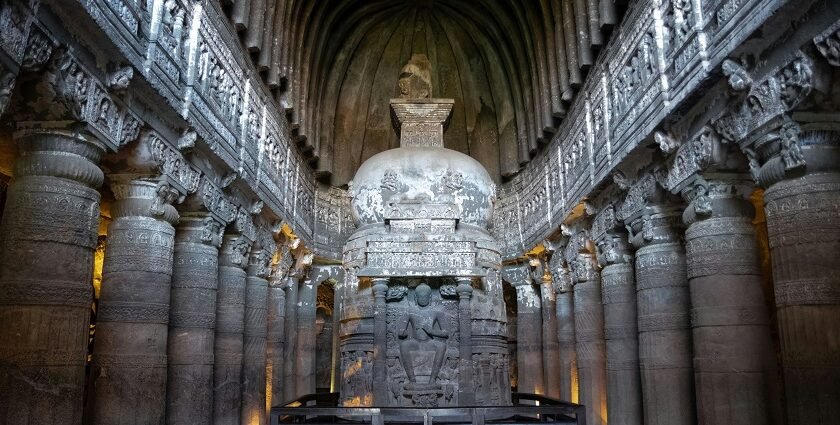
Rock-cut structures mimic open-air theaters, where carvings, columns, light, and cave acoustics breathe life into frescoed stories en.unesco.org.
- Chaitya halls, like Cave 10, hold central stupas while ceiling and walls swirl with murals.
- Viharas, such as Caves 1 and 2, contain monk cells and elaborate frescoes—like Padmapani and Vajrapani.
6. Conservation: Safeguarding Ephemeral Beauty
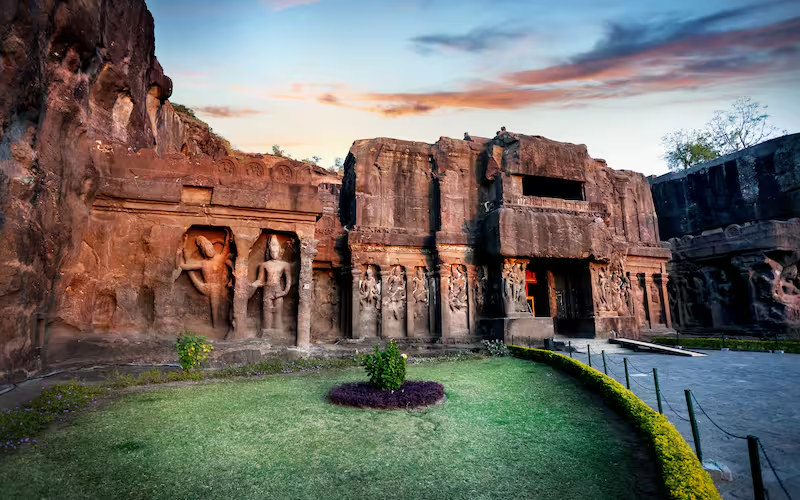
Frescoes are sensitive to foot traffic, humidity, light, and pollution . Recent efforts involve nanotech treatments and structural support led by historians and conservationists , balancing tourism and preservation.
7. Modern Impact and Global Dialogue

Ajanta’s frescoes shaped India’s identity in the arts and diplomacy. Reproductions fuel global admiration and soft power, while digital exhibits keep narratives alive .
8. Step‑by‑Step Visitor Narrative
- Arrival: Approach through dense forest, hearing the waterfall’s murmur.
- Marvel in Caves: Start with Caves 1–2 (master frescoes), then explore 9–10 (chaitya halls), and Cave 26 (Nirvana sculpture) .
- Integrate Space & Story: Observe how light reveals murals; carvings echo narrative rhythms.
- Contemplation Point: Visit interpretive centres to understand art techniques and symbolic depth.
Conclusion: Frescoes as Time Capsules
Ajanta and Ellora’s frescoes aren’t just art—they’re stone-bound stories, blending spiritual insight, narrative richness, and cultural exchange. For any art or history enthusiast, walking through these caves is an immersive trip through ancient storytelling and architectural genius.
📸 Image Resources
- Place captivating high-resolution images of Padmapani (Cave 1), Vajrapani, Jataka scenes, and Kailasa temple to enrich the visual narrative.
Explore More
Interested in ancient murals or rock-cut art?
➡️ Mesmerizing Kerala Murals Mythology in Wall Art : A Timeless Tale Unfolding
